 W
WPhilips Baelde or Father Philippus Baldaeus, was a Dutch minister. He went to Jaffna during the Dutch period in Ceylon with an invading Dutch force. As the second European after Abraham Rogerius he documented the life, language and culture of Tamil people, living in the north of the island. It is a great historical record, and it was immediately published in Dutch and German. English translation was published by Ceylon Government Railway (1960).Dutch Minister, Author of Description of the East Indian Countries of Malabar, Coromandel, Ceylon, etc. Author of the first European document about the life, language and culture of the Tamil people in northern Ceylon.
 W
WAndries Beeckman was a Dutch painter of the 17th century. He is especially famous for his paintings of Southeast Asia and Batavia c. 1660. In 1657 he was known as Andries Beeckman from Zutphen and is last mentioned as finishing two paintings in Amsterdam in 1663. An Andries Beeckman was buried on August 9, 1664 in the Nieuwe Kerk (Amsterdam)
 W
WPieter de Bitter was a 17th-century Dutch officer of the Dutch East India Company. On 12 August 1665 he won the Battle of Vågen against an English flotilla commanded by Thomas Teddeman.
 W
WJoan Blaeu was a Dutch cartographer born in Alkmaar, the son of cartographer Willem Blaeu.
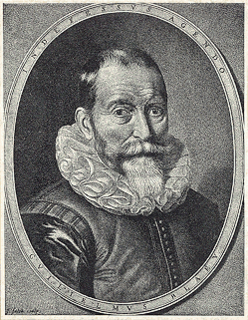 W
WWillem Janszoon Blaeu, also abbreviated to Willem Jansz. Blaeu, was a Dutch cartographer, atlas maker and publisher. Along with his son Johannes Blaeu, Willem is considered one of the notable figures of the Netherlandish/Dutch school of cartography in its golden age.
 W
WJacobus Bontius was a Dutch physician and a pioneer of tropical medicine. He is known for the four-volume work De medicina Indorum. His 1631 work "Historiae naturalis et medicae Indiae orientalis" introduced the word "Orang Hutan" into Western languages.
 W
WFrançois Caron (1600–1673) was a French Huguenot refugee to the Netherlands who served the Dutch East India Company for 30 years, rising from cook's mate to Director-General at Batavia (Jakarta), only one grade below Governor-General. He retired from the VOC in 1651, and was later recruited to become Director-General of the newly-formed French East Indies Company in 1665 until his death in 1673.
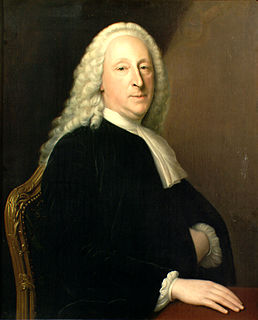 W
WWilhem (II) van Citters was a Dutch politician, who served as grand pensionary of Zeeland from 1760 to 1766.
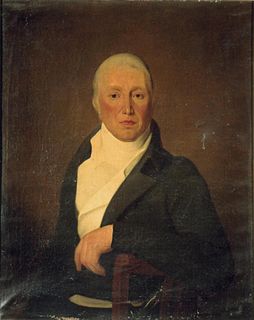 W
WWybo Fijnje was a Dutch Mennonite minister, publisher in Delft, Patriot, exile, coup perpetrator, politician and - during the Batavian Republic and Kingdom of Holland - manager of the predecessor of the Staatscourant.
 W
WFrançois Tack was a Dutch East India Company (VOC) officer. Ranked captain at the time of his death, he was one of the VOC's main commanders during the 1678 Kediri campaign against Trunajaya and participated in the city's assault. He was later killed during a brawl at the court of Mataram in Kartasura on 8 February 1686, where he was sent on a diplomatic mission.
 W
WRobert Jacob Gordon was a Dutch explorer, soldier, artist, naturalist and linguist of Scottish descent.
 W
WHendrick Hamel was the first Westerner to provide a first hand account of Joseon Korea. After spending thirteen years there, he wrote "Hamel's Journal and a Description of the Kingdom of Korea, 1653-1666," which was subsequently published in 1668.
 W
WJohan van Heemskerk (1597–1656), Dutch poet, was born at Amsterdam.
 W
WPaul Hermann was a German-born physician and botanist who for 15 years as director of the Hortus Botanicus Leiden.
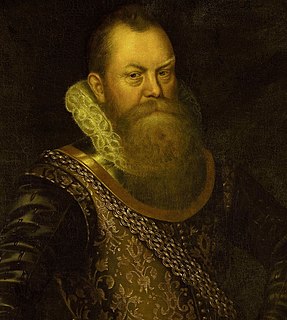 W
WFrederick de Houtman was a Dutch explorer, navigator, and colonial governor who sailed on the first Dutch expedition to the East Indies from 1595 until 1597, during which time he made observations of the southern celestial hemisphere and contributed to the creation of 12 new southern constellations.
 W
WHenry Hudson was an English sea explorer and navigator during the early 17th century, best known for his explorations of present-day Canada and parts of the northeastern United States.
 W
WEngelbert Kaempfer was a German naturalist, physician, explorer and writer known for his tour of Russia, Persia, India, Southeast Asia, and Japan between 1683 and 1693.
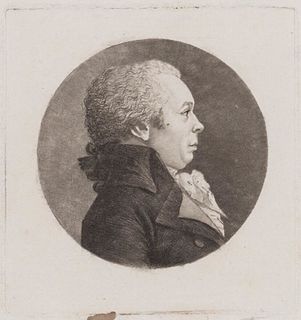 W
WDr. Theodorus van Kooten was a Dutch poet, professor and politician.
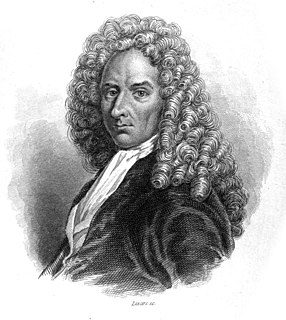 W
WFrançois Levaillant was a French author, explorer, naturalist, zoological collector, and noted ornithologist. He described many new species of birds based on birds he collected in Africa and several birds are named after him. He was among the first to use colour plates for illustrating birds and opposed the use of binomial nomenclature introduced by Carl Linnaeus, preferring instead to use descriptive French names such as the bateleur for the distinctive African eagle.
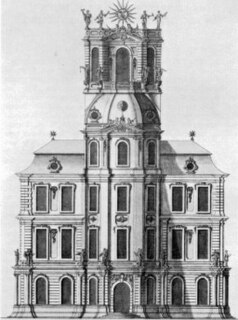 W
WJohan Maurits Mohr was a Dutch-German pastor who studied at Groningen University from 1733 and settled in Batavia in 1737. Mohr's greatest passion was in astronomy but he was also keenly interested in meteorology and in vulcanology.
 W
WSebastiaan Cornelis Nederburgh was a Dutch statesman, first advocate and Commissioner General of the Dutch East India Company.
 W
WJohan Nieuhof was a Dutch traveler who wrote about his journeys to Brazil, China and India. The most famous of these was a trip of 2,400 kilometers (1,500 mi) from Canton to Peking in 1655-1657, which enabled him to become an authoritative Western writer on China. He wrote An embassy from the East-India Company containing the written account of this journey.
 W
WOey Bian Kong, Kapitein der Chinezen was a prominent Chinese-Indonesian bureaucrat who served from 1791 until 1800 as the 20th Kapitein der Chinezen of Batavia, and the last under the Dutch East India Company, which was dissolved in 1799. This post was the most senior in the Chinese civil bureaucracy that governed the local Chinese community as part of the Dutch colonial system of 'indirect rule'.
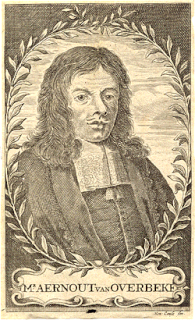 W
WAernout van Overbeke was a Dutch writer and humorist. His works include burlesque letters detailing his travels and a collection of jokes. His Rym-wercken was very popular and was reprinted nine times after his death.
 W
WJohannes Rach was a Danish painter and draughtsman whose works from Copenhagen and Indonesia are a valuable source of architectural and cultural historic knowledge. He began his artistic career painting topographical views for the royal court in Copenhagen, mosrlt in close collaboration with Hans Heinrich Eegberg without any clear indication of who painted whatm and credits are therefore often given to Rach & Eegberg. Later he traveled to the Dutch East Indies, by way of Saint Petersburg and the Netherlands, where he settled in Batavia, and had a military career in the Royal Dutch East Indies Army. At the same time he continued to pursue his artistic work with considerable commercial success. He set up a large studio with local employees who worked in his style, and produced depictions of the city and surrounding countryside for the local elite.
 W
WHendrik Adriaan van Rheede tot Drakenstein was a military man and a colonial administrator of the Dutch East India Company and naturalist. Between 1669 and 1676 he served as a governor of Dutch Malabar and employed twenty-five people on his book Hortus Malabaricus, describing 740 plants in the region. As Lord of Mydrecht, he also played a role in the governance of the Cape colonies. Many plants such as the vine Entada rheedii are named for him. The standard author abbreviation Rheede is used to indicate this person as the author when citing a botanical name.
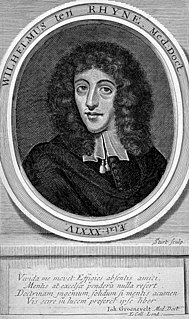 W
WWillem ten Rhijne was a Dutch doctor and botanist who was employed by the Dutch East India Company in 1673. In summer 1674 he was dispatched to the trading post Dejima in Japan. While giving medical instructions and taking care of high-ranking Japanese patients, ten Rhijne collected materials on Japanese medicine, especially on acupuncture and moxibustion.
 W
WAbraham Rogerius or Abraham Roger was a Dutch clergyman/translator working for the Dutch East India Company, and one of the first Europeans who wrote about Indian culture.
 W
WGeorg Eberhard Rumphius was a German-born botanist employed by the Dutch East India Company in what is now eastern Indonesia, and is best known for his work Herbarium Amboinense produced in the face of severe personal tragedies, including the death of his wife and a daughter in an earthquake, going blind from glaucoma, loss of his library and manuscripts in major fire, and losing early copies of his book when the ship carrying it was sunk.
 W
WIsaac de l'Ostal de Saint-Martin was a French chevalier, who came in an unknown year from the Béarn to the Dutch Republic.
 W
WCaspar Schamberger was a German surgeon. His name represents the first school of Western medicine in Japan and the beginning of rangaku, or Dutch studies.
 W
WWillem Cornelisz Schouten was a Dutch navigator for the Dutch East India Company. He was the first to sail the Cape Horn route to the Pacific Ocean.
 W
WSouw Beng Kong, 1st Kapitein der Chinezen, called Bencon in older Dutch sources, was an ally of the Dutch East India Company and the first Kapitein der Chinezen of Batavia, capital of colonial Indonesia. This was the most senior Chinese position in the colonial civil bureaucracy with legal and political jurisdiction over the local Chinese community in the colony.
 W
WLouis Michel Thibault, was a French-born South African architect and engineer who designed numerous buildings in the Cape Colony. He was South Africa's first trained architect and brought with him a distinctive mannered neo-classicism.
 W
WCarl Peter Thunberg, also known as Karl Peter von Thunberg, Carl Pehr Thunberg, or Carl Per Thunberg, was a Swedish naturalist and an "apostle" of Carl Linnaeus. After studying under Linnaeus at Uppsala University, he spent seven years travelling in southern Africa and Asia, collecting and describing many plants and animals new to European science, and observing local cultures. He has been called "the father of South African botany", "pioneer of Occidental Medicine in Japan", and the "Japanese Linnaeus".
 W
WJan Janse de Weltevree was a Dutch sailor and probably the first Dutchman to visit Korea. His adventures were recorded in the report by Dutch East India Company accountant Hendrik Hamel. Hamel stayed in Korea from 1653 to 1666.
 W
WSamuel Iperuszoon, Knight Wiselius was a successful Dutch lawyer and a prominent Patriot and democrat, involved in the dismantling of the Dutch East India Company (VOC) and the negotiations over the Cape. Wiselius was a witty, Voltairian spirit with political views far ahead of his time who would end his days writing dramas on Classical themes. Wiselius corresponded with nearly all the main players at the time of the Batavian Republic and it would be impossible to know that period completely without his carefully kept and neatly written correspondence. He was also a poet, historian and superintendent of the police.
 W
WWolraad Woltemade was a Cape Dutch dairy farmer, who died while rescuing sailors from the wreck of the ship De Jonge Thomas in Table Bay on 1 June 1773. The story was reported by the Swedish naturalist Carl Peter Thunberg who was in South Africa as a surgeon for the Vereenigde Oostindische Compagnie at the time.